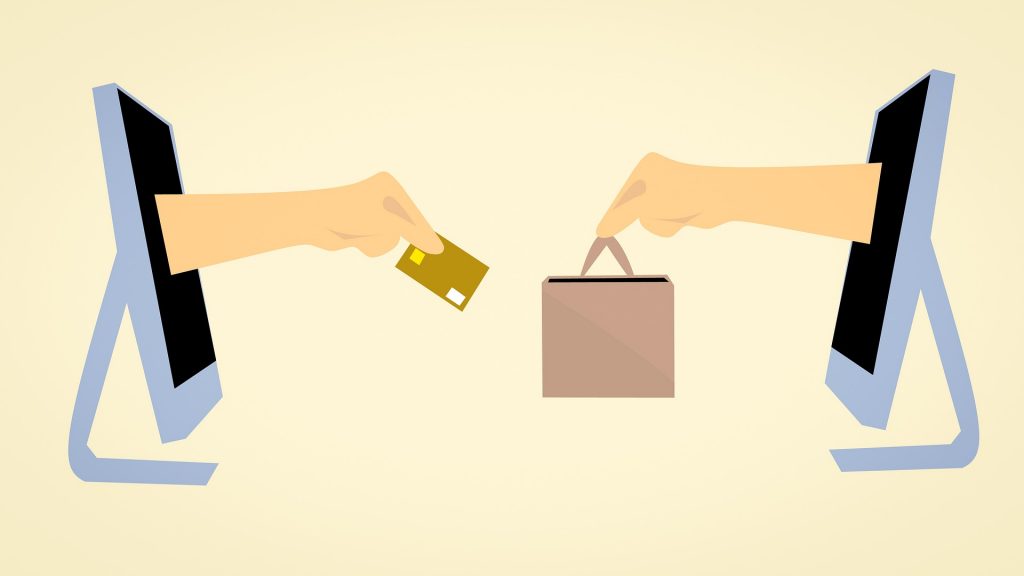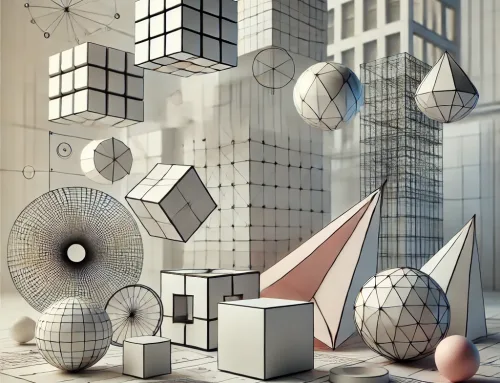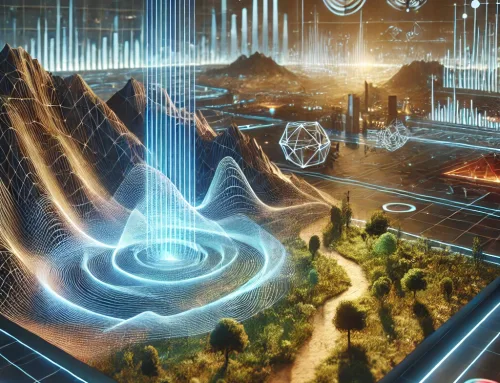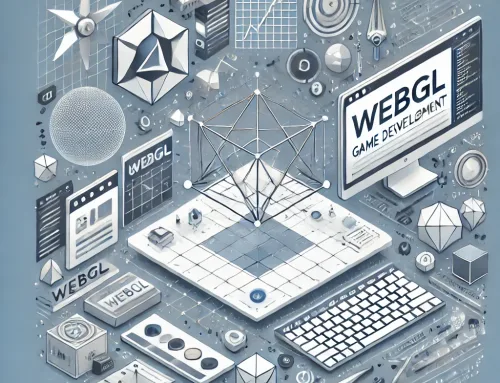Was Einzelhändler beim Einsatz von AR, VR und 3D beachten sollten.
Das Sprichwort, dass ein Bild mehr als tausend Worte sagt, ist schon recht alt, aber seine Anwendung ist für eCommerce-Händler wichtiger denn je. Hochwertige Produktbilder können in fast jeder Branche die Umsätze steigern und die Rendite verringern.

Glücklicherweise ermöglicht es die Software heute, visuelle Inhalte einfacher und kostengünstiger denn je zu erstellen. Und dieser Inhalt beschränkt sich nicht mehr nur auf statische Bilder: Die Einzelhändler von heute können den Käufern Augmented Reality (AR), Virtual Reality (VR) und 3D-Erlebnisse anbieten, die ihnen helfen, zu verstehen, wie sich ihre Angebote durch den Kaufprozess bewegen.
AR für den Einzelhandel: Produkt-Previews im Kontext anbieten.
Der durchschnittliche eCommerce-Einzelhändler verliert etwa 75% des potenziellen Umsatzes durch das Verwerfen von Warenkörben. Der Hauptgrund dafür, warum Kunden den Kauf nicht abschließen, liegt meistens an den eher dürftigen Rückgaberegelungen der Shop-Betreiber.
Das Angebot von AR auf Ihrer Website kann Ihnen helfen, dieses Problem anzugehen, indem Sie den Kunden genau zeigen, wie Ihre Produkte in dem von Ihnen gewünschten Kontext aussehen werden. Dies gibt Ihren Kunden die Gewissheit, dass Ihr Produkt wie vorgesehen funktioniert und sie es daher nicht zurückgeben müssen, sobald es ankommt.
Wie könnte AR also in diesem Zusammenhang aussehen?
Ein Möbelhändler könnte Kunden die Kamerafunktion eines Smartphones oder Tablets nutzen lassen, um ein Bild eines Sofas mit einem Bild Ihres Wohnzimmers zu überlagern. Ein Lackhändler könnte etwas Ähnliches anbieten.
AR-Lösungen eignen sich sehr gut für Einzelhändler, die große oder teure Artikel verkaufen, bei denen die Retouren unhandlich sind oder wann immer ein Kunde ein Produkt erleben möchte, bevor er sich für den Kauf entscheidet. Durch die Kombination von Bildern der realen Welt mit digitalen Renderings vermittelt AR den Käufern einen Eindruck von Größe und Details der Produkte, damit sie sichere Kaufentscheidungen treffen können.
VR für den Einzelhandel: Rundgänge von der Couch aus anbieten.
VR ermöglicht den Käufern ein völlig eindringliches virtuelles Erlebnis, das in der Regel durch ein Headset ermöglicht wird. Währenddessen einige Einzelhändler (wie Ikea und The North Face) VR-Erfahrungen in Geschäften anbieten, haben wir festgestellt, dass die Käufer mit VR im öffentlichen Raum weniger zufrieden sind und zu Hause mehr Komfort haben.
Das macht Sinn: Sich in die VR zu wagen bedeutet, die Fähigkeit aufzugeben, die Welt um sich herum zu sehen. Die meisten Menschen fühlen sich wohler, wenn sie das zu Hause tun.
Einzelhändler können die Vorteile von VR nutzen, indem sie virtuelle Rundgänge durch ihre Räume anbieten, um häufige Fragen zu beantworten oder Ängste zu lindern. Zum Beispiel:
- Lebensmittelhändler könnten einen Rundgang durch den glutenfreien Teil ihres Geschäfts sogar durch die Fabriken machen, in denen glutenfreie Lebensmittel hergestellt werden. Dies würde die Sorge um eine Kontamination für Allergiker und andere Ernährungseinschränkungen beseitigen.
- Masseneinzelhändler könnten standortspezifische Rundgänge anbieten, die sich an Eltern richten, die hoffen, den Spielzeug- oder Süßigkeitengang zu überspringen und damit Geschrei zu vermeiden.
- Fitnessstudios könnten potenziellen Mitgliedern die Möglichkeit geben, die Anlage zu besichtigen, ohne das schweißtreibende Training der bestehenden Mitglieder zu unterbrechen. Dies hat auch den Vorteil, dass die Anlage in Top-Form präsentiert wird und nicht so, wie sie am stärksten frequentiert ist.
Zugegeben, diese Erfahrungen erfordern, dass die Käufer VR-Headsets besitzen. Während die Akzeptanz insgesamt noch bescheiden ist, locken Ausstattungsverbesserungen immer mehr Verbraucher zum Kauf, so dass VR-Rundgänge in naher Zukunft voraussichtlich wirkungsvoller sein werden.
3D Renderings: Verkauf ohne Prototyp.
Wenn es darum geht, 3D für Produktvisualisierungen zu nutzen, gibt es eigentlich zwei verschiedene Strategien: 3D-Produktrenderings zur Erstellung fotorealistischer zweidimensionaler Bilder und interaktiver 3D.
Erstere beinhaltet die Verwendung von Software zur Erstellung hyperrealistischer 2D-Bilder aus CADs oder anderen digitalen Konstruktionen. Dieses Verfahren ist im Vergleich zur traditionellen Fotografie äußerst kostengünstig, zum Teil, weil es dem Handel nach der ersten Bilderstellung ermöglicht, Bilder nach Bedarf anzupassen und zu manipulieren.
Die Erstellung von Bildern aus 3D-Renderings kann besonders nützlich sein, wenn:
- Ein Produkt oder Produkttyp wurde noch nicht hergestellt, aber Sie möchten schon mit der Auftragsannahme beginnen.
- Sie haben ein begrenztes Budget für Fotoaufnahmen (z.B. wenn Sie Fotos von Ihrem Produkt in der Ferne haben möchten, können 3D-Renderings dies ohne die Kosten für ein Fotoshooting vor Ort ermöglichen).
- Sie haben einen großen Katalog von Artikeln.
- Ihr Katalog wird regelmäßig aktualisiert.
- Sie möchten mit verschiedenen Hintergründen experimentieren.
- Sie möchten 360-Grad-Bilder.
Entscheidend ist, dass die User den Unterschied zwischen Bildern, die aus Renderings erstellt wurden und „echten“ Fotos nicht erkennen können. So können Sie für einen Bruchteil der Kosten der traditionellen Fotografie Ergebnisse ähnlicher oder besserer Qualität erzielen.
Interaktives 3D: Behebt alle Zweifel.
Eine weitere Möglichkeit 3D anzuwenden ist die Erstellung von vollständig interaktiven 3D-Visualisierungen auf Ihrer Website, die der Kunde manipulieren, animieren oder nach seinen Bedürfnissen konfigurieren kann. Diese Technologie funktioniert tendenziell am besten für:
- Teure oder hochwertige Artikel, die der Käufer vor dem Kauf von allen Seiten sehen möchte.
- Elemente mit komplizierten Details, einschließlich Komponenten für Maschinen.
- Gegenstände, die häufig zurückgegeben werden (die Möglichkeit, etwas aus allen Blickwinkeln zu sehen, verhindert Überraschungen und kann die Rückgabe reduzieren).
- Technische Artikel mit komplexen Innenräumen, die mit virtualisierten Ausfällen illustriert werden können (wie ein Fußballhelm mit zusätzlichen Sicherheitsfunktionen).
Wenn Käufer interaktive 3D-Visualisierungen auf Handheld-Geräten manipulieren, genießen sie eine Intimität, die der eines Ziegel- und Mörtelgeschäfts ähnelt, was Ihnen helfen kann, Vertrauen in das zu gewinnen, was sie kaufen.
Verbessern Sie Ihren ROI.
Unabhängig davon, welche digitalen visuellen Komponenten für Ihre eCommerce-Website am sinnvollsten sind, führt die Wahl der digitalen Visualisierung von Produkten zu mehr Conversions und besserer Rendite – für weniger Vorabinvestitionen als bei der traditionellen Fotografie. Hinzu kommt die Möglichkeit, Visualisierungen on the fly anzupassen und die digitale Bilderstellung hat einen klaren Vorteil gegenüber traditionelle analoge Bilder.
Vielen Dank für Ihren Besuch.


